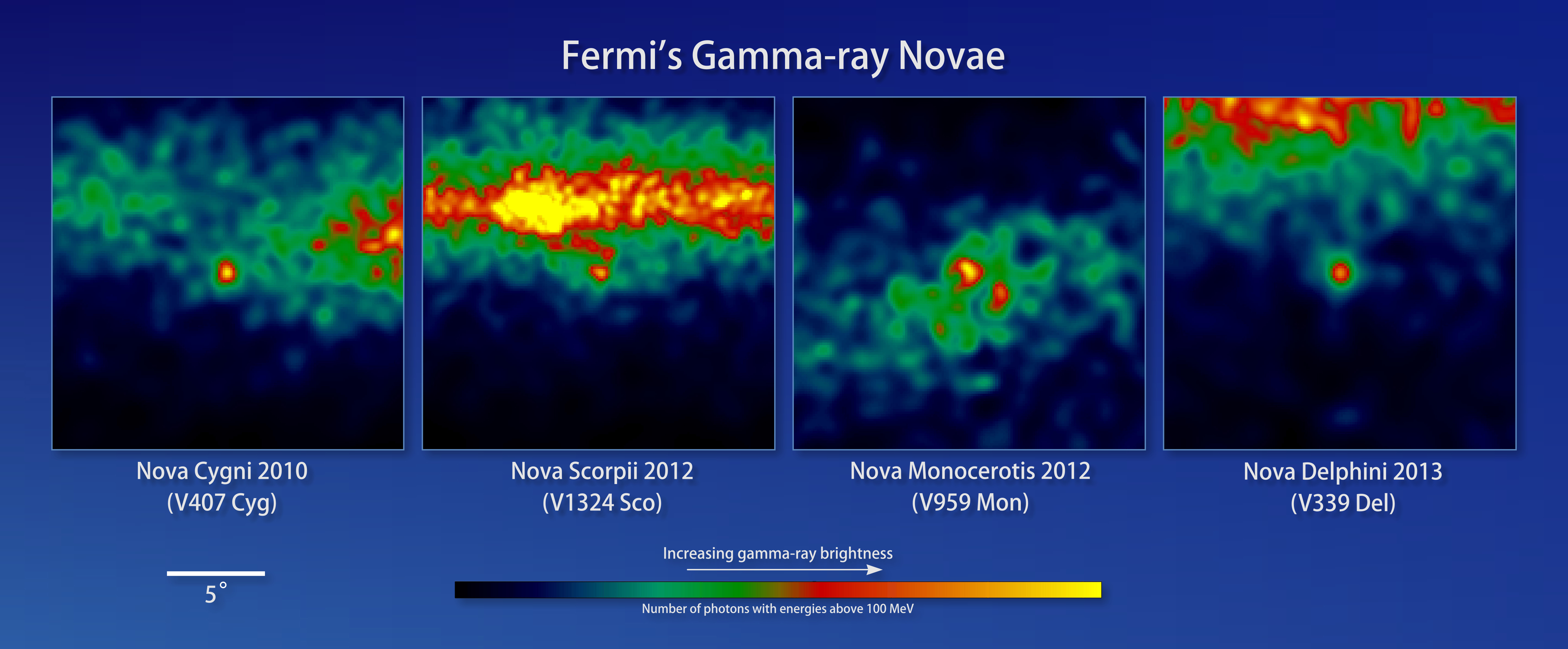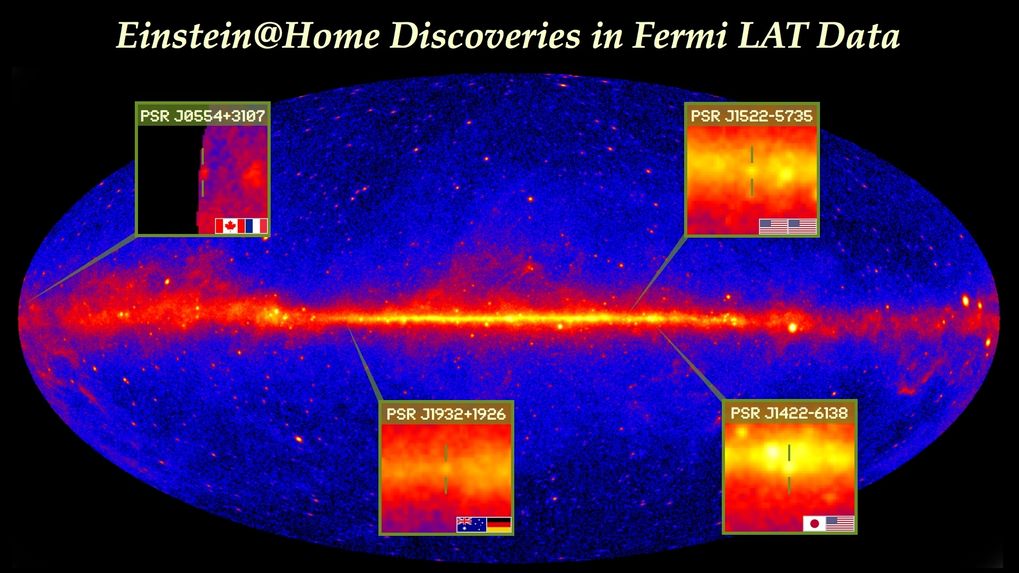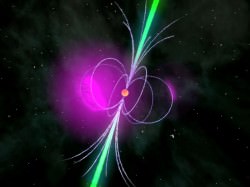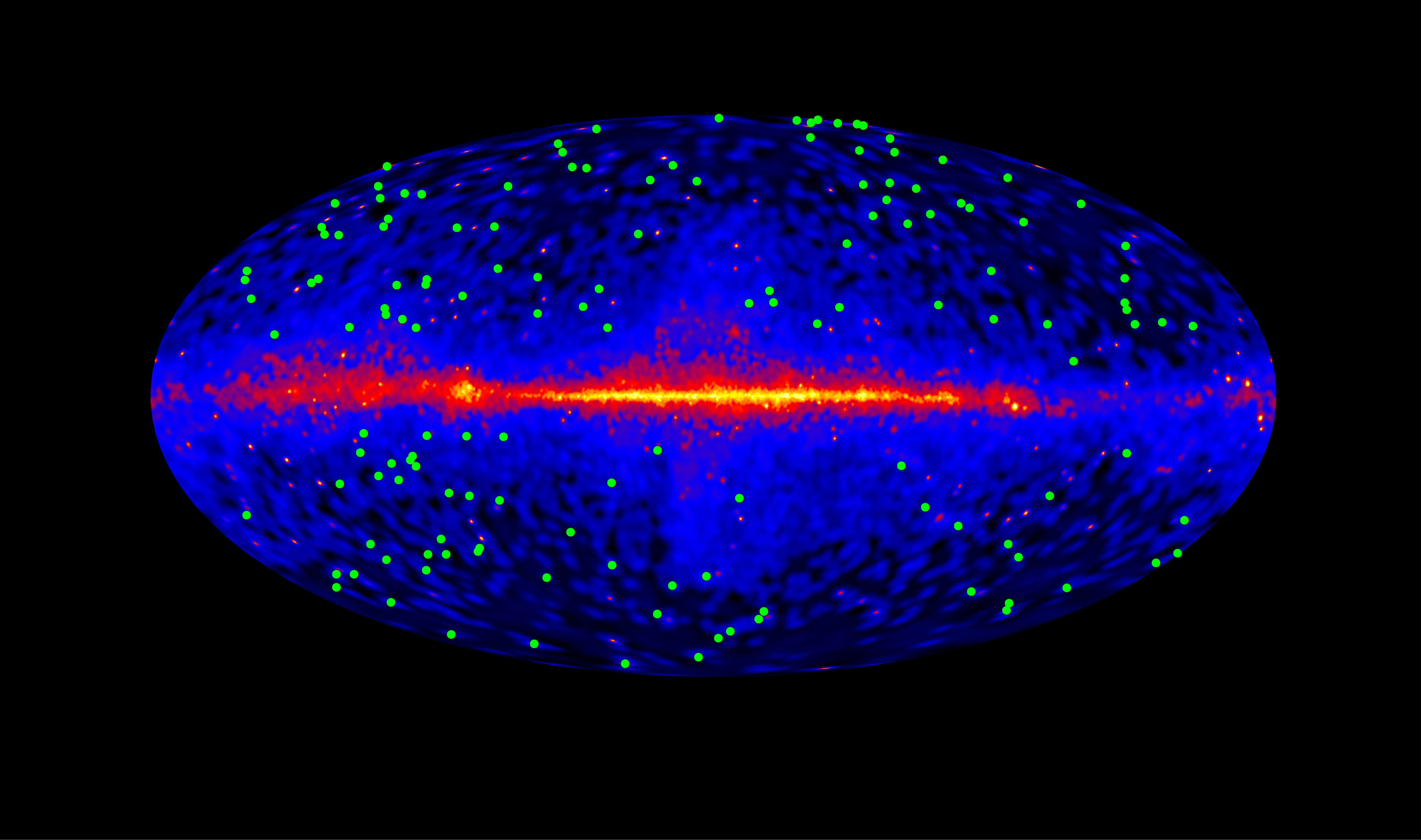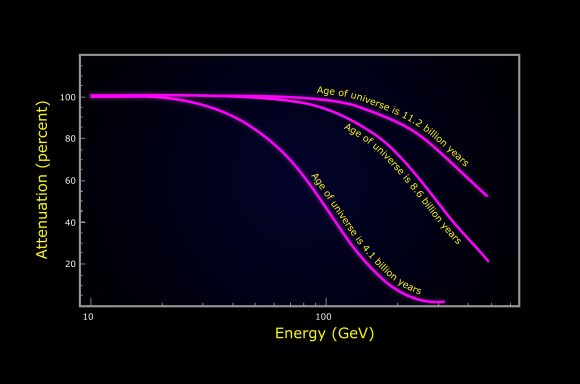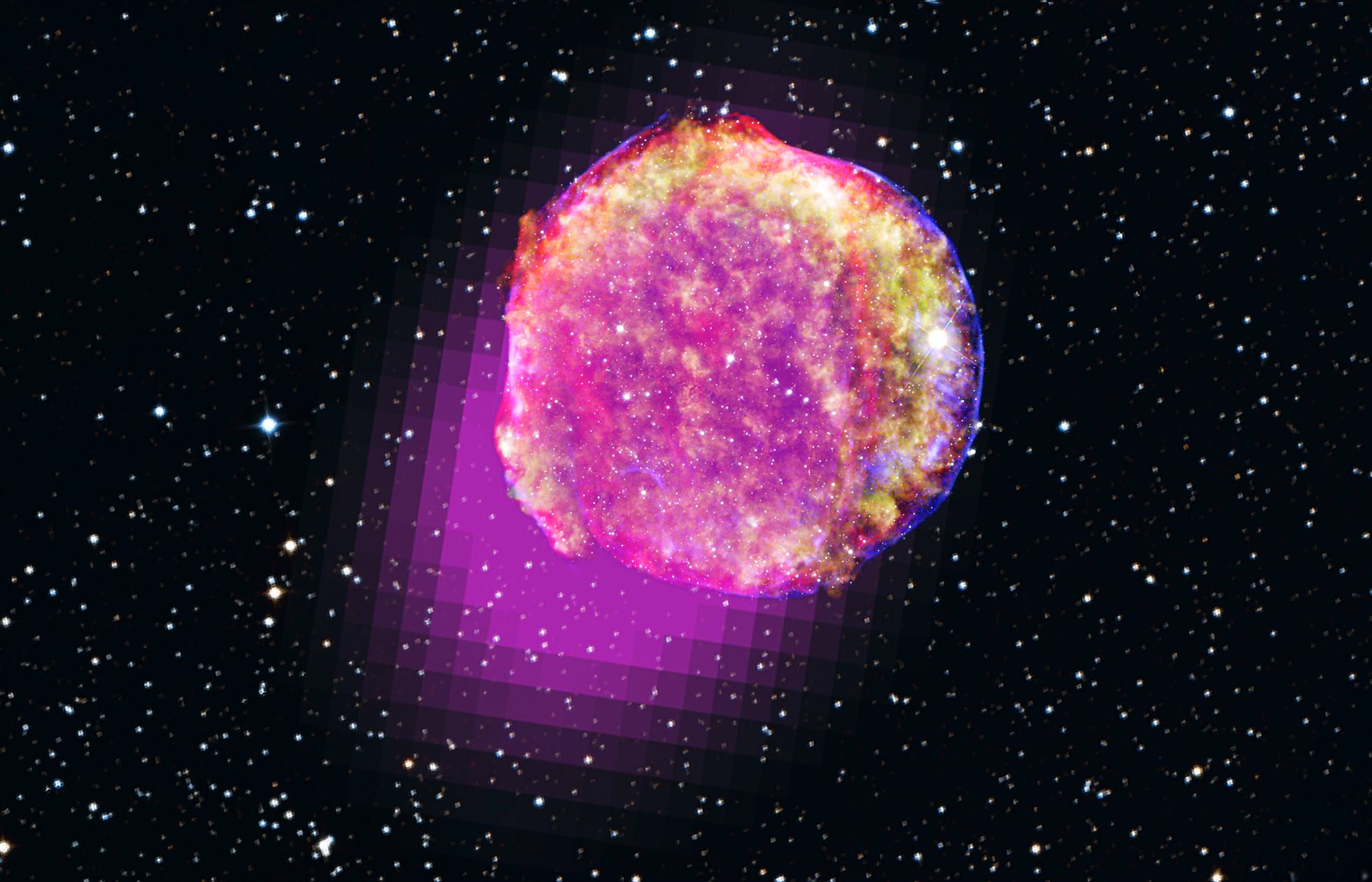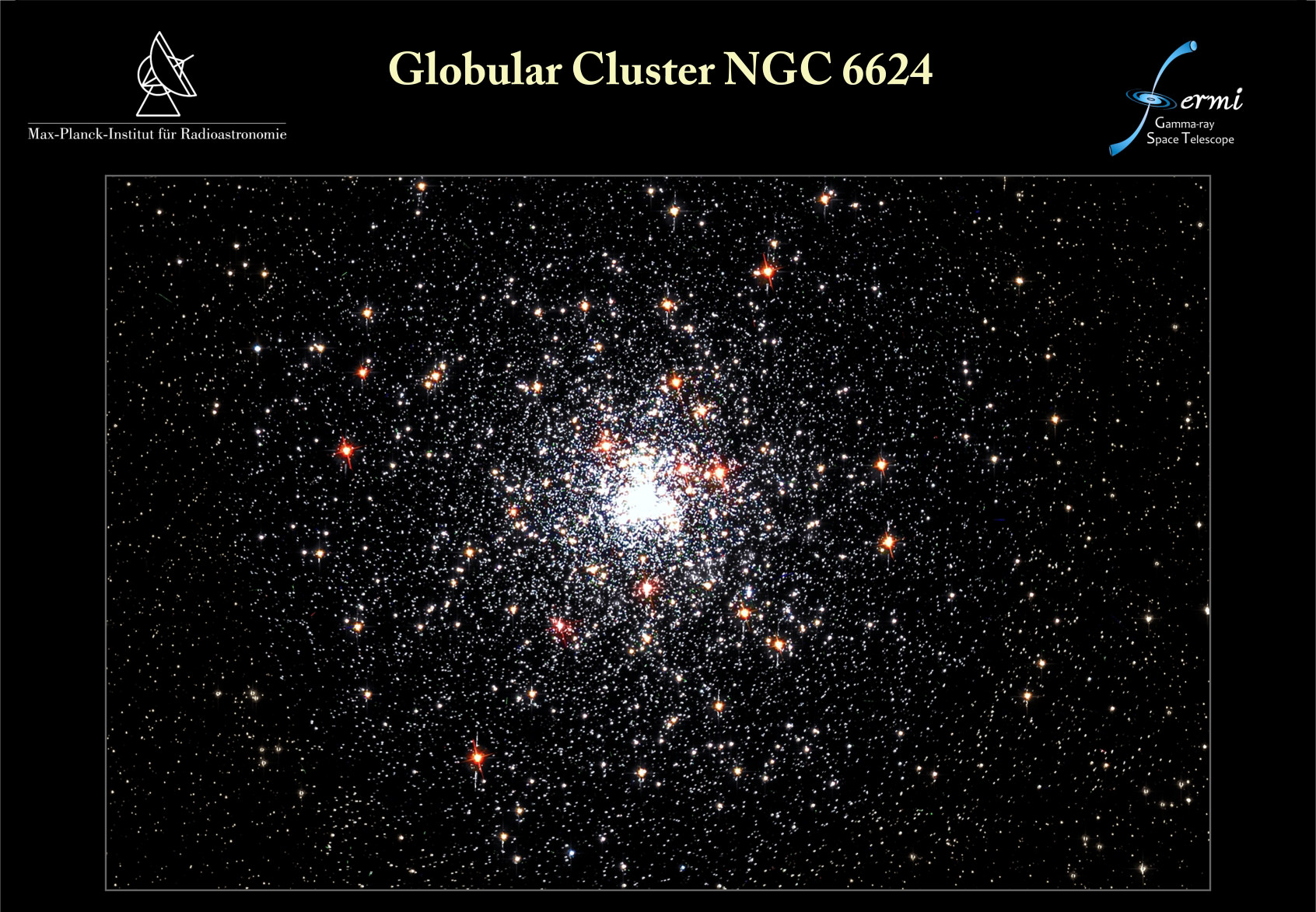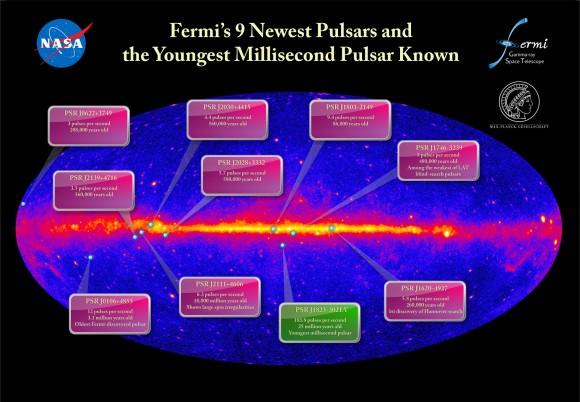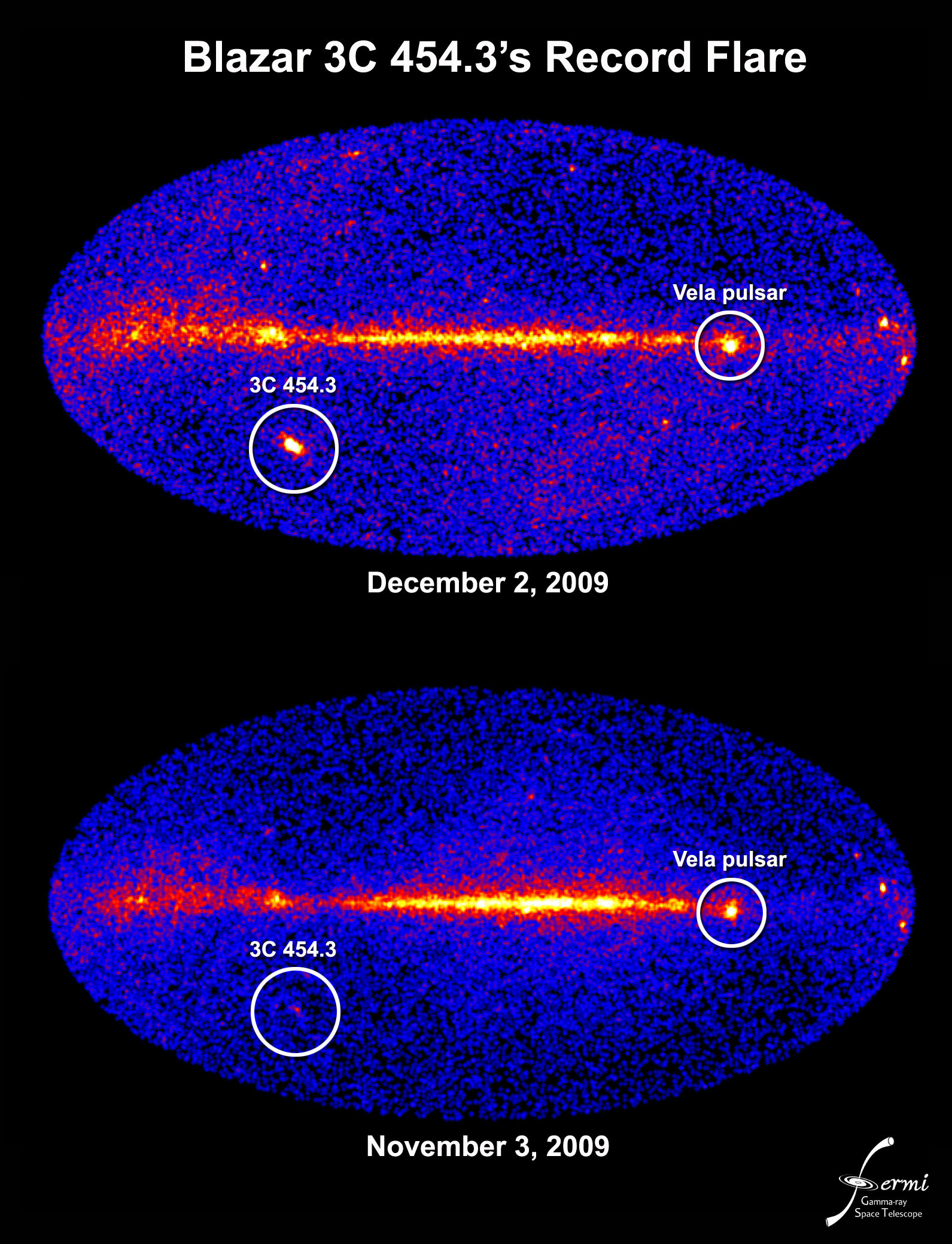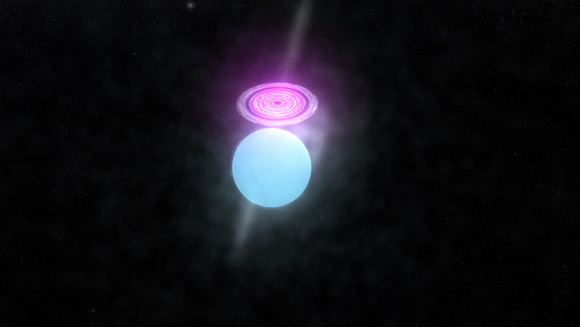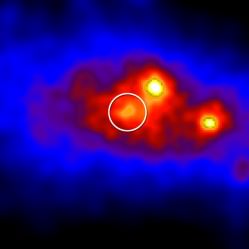In a classical nova, a white dwarf siphons material off a companion star, building up a layer on its surface until the temperature and pressure are so high (a process which can take tens of thousands of years) that its hydrogen begins to undergo nuclear fusion, triggering a runaway reaction that detonates the accumulated gas.
The bright outburst, which releases up to 100,000 times the annual energy output of our Sun, can blaze for months. All the while, the white dwarf remains intact, with the potential of going nova again.
It’s a relatively straightforward picture — as far as complex astrophysics goes. But new observations with NASA’s Fermi Gamma-ray Space Telescope unexpectedly show that three classical novae — V959 Monocerotis 2012, V1324 Scorpii 2012, and V339 Delphini 2013 — and one rare nova, also produce gamma rays, the most energetic form of light.
“There’s a saying that one is a fluke, two is a coincidence, and three is a class, and we’re now at four novae and counting with Fermi,” said lead author Teddy Cheung from the Naval Research Laboratory in a press release.
The first nova detected in gamma rays was V407 Cygni — a rare star system in which a white dwarf interacts with a red giant — in March 2010.
One explanation for the gamma-ray emission is that the blast from the nova hits the hefty wind from the red giant, creating a shock wave that accelerates any charged particles to near the speed of light. These rapid particles, in turn, produce gamma rays.
But the gamma-ray peak follows the optical peak by a couple of days. This likely happens because the material the white dwarf ejects initially blocks the high-energy photons from escaping. So the gamma rays cannot escape until the material expands and thins.
But the later three novae are from systems that don’t have red giants and therefore their winds. There’s nothing for the blast wave to crash into.
“We initially thought of V407 Cygni as a special case because the red giant’s atmosphere is essentially leaking into space, producing a gaseous environment that interacts with the explosion’s blast wave,” said coauthor Steven Shore from the University of Pisa. “But this can’t explain more recent Fermi detections because none of those systems possess red giants.”
In a more typical system it’s likely that the blast creates multiple shock waves that expand into space at slightly different speeds. Faster shocks could blast into slower ones, creating the interaction necessary to produce gamma rays. Although, the team remains unsure if this is the case.
Astronomers estimate that between 20 and 50 novae occur each year in the Milky Way galaxy. Most go undetected, their visible light obscured by intervening dust, and their gamma rays dimmed by distance. Hopefully, future observations of nearby novae will shed light on the mysterious process producing gamma rays.
The results will appear in Science on August 1.

